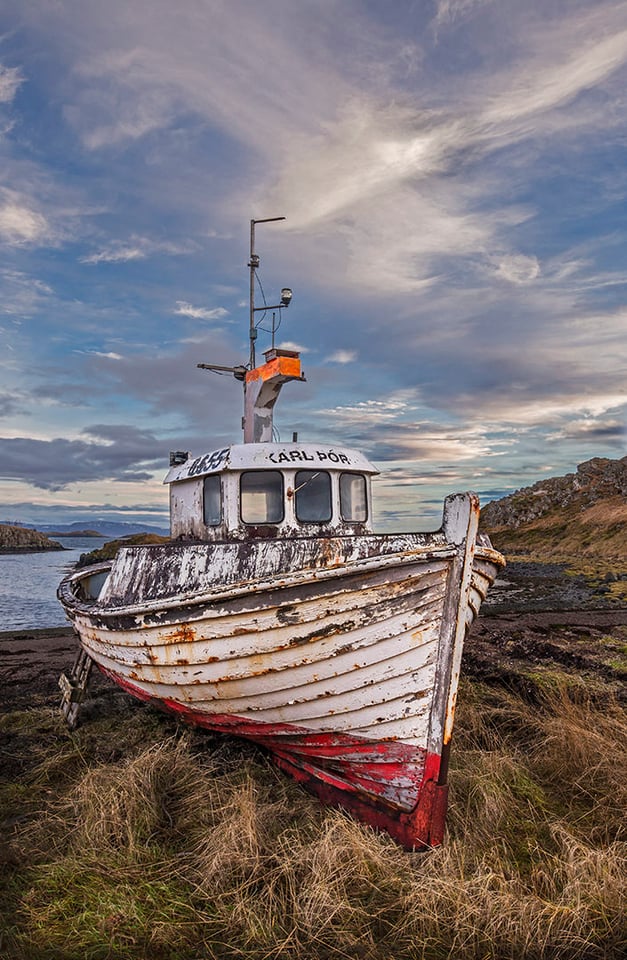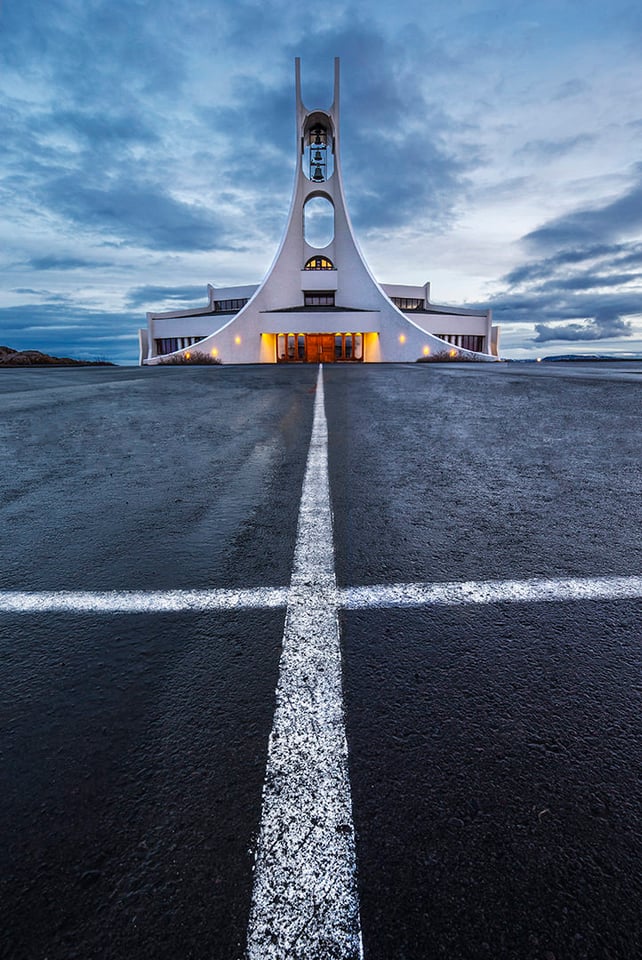It is no secret that I love using ultra wide-angle lenses for my landscape photography. I was especially excited when I received the new Sigma 12-24mm f/4 DG HSM Art lens just before I departed for my winter Iceland workshop. It has an amazing 122-degree angle of view at 12mm. Many photographers have a difficult time using ultra wide-angle lenses correctly when composing a scene. Why? The simple answer is that they do not get close enough to their subject.

In the image above of Mt. Kirkjufell and the falls, I used the ultra wide view to capture the curve of the foreground that was literally just at my feet. For optimum sharpness with a long exposure time, like 1.6 seconds in the image above, you must have the camera and lens mounted on a sturdy tripod and head!

Going vertical, as in the image above a few moments later, brings up another challenge when photographing at the ultra wide angles of view. Be aware that you may capture your tripod legs (or you own feet) in the image if you don’t position the lens correctly with the two front legs of the tripod positioned parallel to the back of the camera. In both of the images, my tripod legs and boots are just barely out of the frame. In this image, I am close enough to the falls that I am occasionally getting the spray from them on the lens.

Having a wide-angle zoom lens can be helpful for shots like the one above where I wanted to exaggerate my view. I positioned myself fairly close to this boat to both exaggerate its size and also capture the dramatic clouds. The zoom range on my Sigma 12-24mm f/4 Art allowed me to eliminate a few distractions on both the right and left sides without physically having to move from the spot I chose to compose from.

I really embraced this exaggerated view when using this lens and took full advantage of the incredible edge-to-edge sharpness with an approximate 10 inch minimum focusing distance even at 12mm! In the image above, I was about a foot away from the parking lot lines at the church in Stykkishólmur, which made the “cross” in the foreground very prominent. This minimum focusing distance and wide angle of view allow for endless creative possibilities.

I can tell you from experience that when working in extreme environments and very close to steep edges, having a bit of zoom versatility gives me more confidence once I find some solid ground to position myself on. It was very windy and started to rain the afternoon of this shoot, so it was nice to not have to worry about repositioning my tripod and myself. I was approximately 4 feet from the edge to capture the curve of the foreground and keep the base of the falls from merging with it. I’m estimating that ledge at 500 feet high, but if I were a betting man I would bet it is even more!

As you can see, this zoom range has served me well all the way from the ultra wide view at 12mm to the far end of 24mm with exceptional sharpness throughout. Because of the weather, I didn’t get a chance to use the lens at night at the wide apertures, but I’m sure I will have other opportunities to use it on other night photography projects in the future and will keep you posted.
This guest post has been submitted by Roman Kurywczak, a proud member of the Sigma Pro Team. Roman has been a professional nature photographer for 15 years and he regularly conducts workshops across the globe. The author of several instructional eBooks on nature photography, Roman strives to share his passion for photography as others have shared with him. He lives in New Jersey and is married with two sons. You can find his galleries, blog, tour schedule, and more on his website.
Great work, I can’t wait too get to Iceland. I also have this lens and I’m very happy with it’s performance on the D810 (very sharp), I did some night shots and they looked great. I can’t wait to get the new Sigma 14mm f/1.8 when it comes out I’m sure it will perform very well for astrophotography, I think it’s going to winner also. Go Sigma!
When I was standing next to Kirkjufellfoss I kept thinking to myself “Man I wish I had a wider lens”
Truly Amazing. Great lens and wonderful photographer..
OMG they are amazing!
Looks like a great place to visit and great use of your new lens. I went Wide Angle back when I used a 10-22mm on my Canon T2i (equal to 16 to 35) and when I went to Sony with the A7s I first went to Voigtlander 12mm then Sony’s SEL1018 f/4 IS/AF used full frame 12-18mm and Voigtlander 10mm. Not only Landscapes but indoor shots, buildings/caves/tunnels are great with super ultra wides. What I like to do most is night Milky Way Galactic Center captures. Stars in the corners a big concern with astrophotography, they get elongated due to light coming in the center of the lens is faster than the light at the edges. Labs will put up charts and test the lens but real world shots focus of stars and how they look in the corners is a test. Why go wide with the Milky Way you get it smaller than a fast 35mm AND your shutter speed can be longer 50 sec. for a 10mm, 42 sec. for 12mm, 36 sec. for 14mm and 31 sec. for 16mm for more light and lower ISO. But like your boat shot from the same spot you can get a Milky Way over the top without doing a pano of course you do not get the rainbow effect. Lastly when using ultra wides keeping your camera level will allow for vertical things to be vertical and indoor shots aim for corners and watch for things hanging from above. Also you can do a hand hold shot at a longer SS without effect due to wideness FOV. Does it have IS also could not find?
No OS (as it is called on the Sigma). I don’t handhold that lens.
Very timely post for me as I just yesterday finalized booking my trip to Iceland for June. My widest lens is the Nikkor 18-35 but I think it will be quite wide enough on my D750. I have known for some time that one needs to get close to the foreground for good WA photography but your article really makes it clear.
Looks like a great lens in the hands of a talented photographer. Great shots.